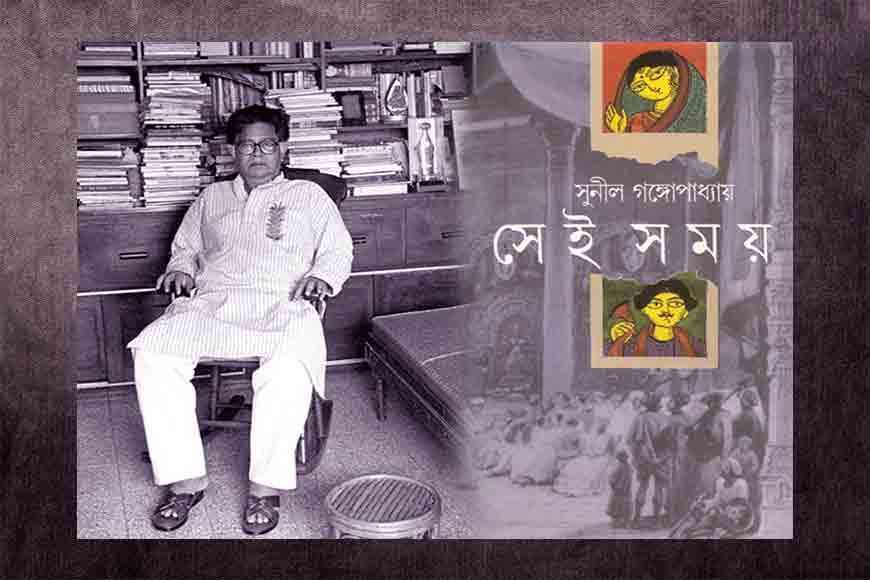Shei Shomoy! On Sunil Gangopadhyay’s birth anniversary, a GB tribute

Shei Shomoy… the multiple award-winning book, where poet-novelist Sunil Gangopadhyay pushes himself beyond the frontiers of the ‘well-made novel’ into the fascinating world of family and period history, reportage, travel narrative, folklore and ethnography. A central achievement of the novelist lies in the manner, in which he integrates the small, local histories of Bengal into grand narratives of the nation. Invoking cultural memory and a vestige of history, Gangopadhyay offers a new understanding of our colonial past.The monumental work, covering an awesome 907 pages in two volumes in the original, encompasses some of the eventful and turbulent chapters of our colonial history.
Focused on the Bengal Renaissance, the crucial decades between 1840-1870, rather than the period between 1825-1845 offered by cultural historians like Shibnath Shashtri, the novel attempts the reconstruction of an epoch whose significance has for decades divided the community of Indian historians and cultural critics.
Was the Bengal Renaissance the seed-time of nationalistic fervour that culminated in the Swadeshi Movement? Was it more in the nature of an enlightenment? Or was it a form of religious revivalism or Hindu nationalism? Gangopadhyay does not claim to have the final answer. In fact, he maintains that history in the conventional sense is not central to his metier, though there is a painstaking and admirable reconstruction of the past with an eye for cultural nuances.
In Gangopadhyay’s world of the Bengal Renaissance, there are the good Europeans such as David Hare and John Bethune, sympathetic to the Indian cause just as there are bad Englishmen who comprise the bulk of the trading and missionary classes.His heroes and villains do not fall into predictable racial stereotypes.There are plenty of bad natives too: servile, decadent and collusive.
The narrative closely follows the fortunes of two families: the Mukherjees and the Singhas, landed aristocrats of 19th century Bengal. It is a complex chronicle of their bonding. Beyond the fate of the scions of these households, there is the looming presence of the fate of the land, the working of larger forces and cross-currents of history: the impact of colonial rule on a decaying feudal order, the beginning of progressive reformatory movements such as the Brahmo Samaj and the Young Bengal Movement.In capturing the life of this unique city, Gangopadhyay’s skill clearly goes beyond many disciplines, and the novel should be required reading for all lovers of history and literature.
Source:
Those Days: A Novel
By Sunil Gangopadhyay
Translated by A. Chakravarti
Penguin
Pages: 588
Price: Rs 295
(India Today)
Sunil Gangopadhyay’s Photo – Nilanjan Ray








